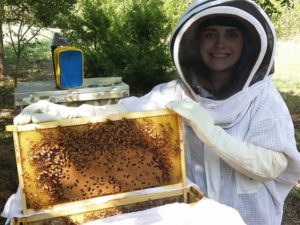تربية نحل طبيعية ومتجددة للمبتدئين
- وصف
- المناهج الدراسية
- التعليمات
- المراجعات
Due to many problems such as climate change, pollution, pesticides, loss of habitat, and farming practices many animal and insect species are in sharp decline. Scientists say that if we continue the way we are going we will only have 60 more harvests left before we no longer have a planet.
Conventional beekeeping has put the honeybee in decline and made it completely dependent on intervention of the beekeeper for its survival. This course is designed to show the beekeeper Natural and compassionate ways of keeping bees so that they regenerate their natural resistance to pests and disease
This is a series of 7 Lessons that takes the beginner beekeeper student through a series of practical discussions and presentations in the methods of natural and regenerative beekeeping.
The Lessons are made up of slides with photographs of the many situations in a bee hive a beekeeper may encounter. Most of these photos are from the albums of the lecturer complied over the years.
At the end of this series a student will be able to set up an apiary, trap swarms to populate their apiary and carry out simple inspections to determine the health of the colony. The student will also have an understanding of the history of the honeybee and its origins, classification and traits.
The last two Lessons are each split into two parts due to the length of the subjects. The first is lesson 6 which teaches the student how to work in their Apiary, how to handle the bees and what problems to look for. Lesson 7 deals with catching swarms and how to make splits ( hive divides) to increase the number of hives.






